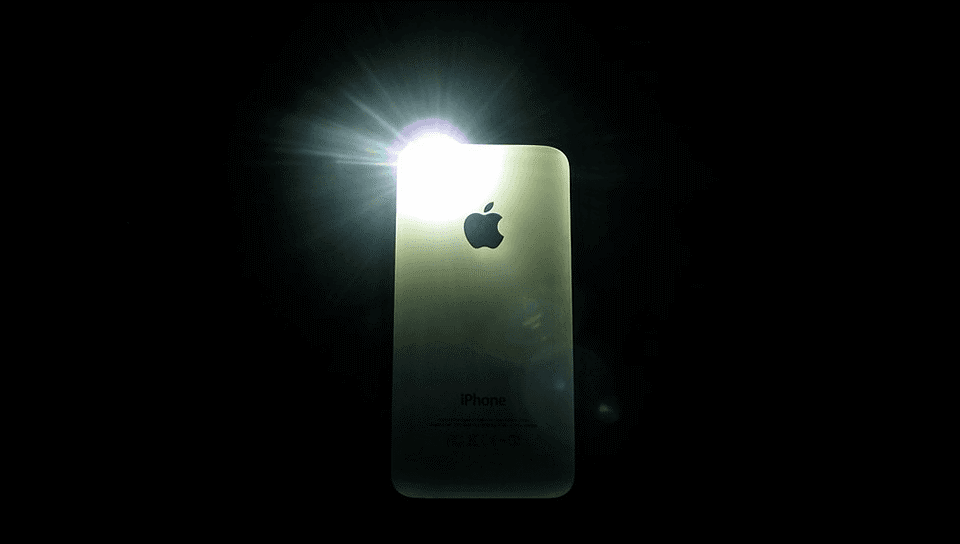
Remember when you desperately needed to use your phone’s flash, but unfortunately your battery was almost dead? Some emergency situations may call for the flash to be turned on, and it gets worse when we can’t turn it on because the battery is low; The phone’s operating system prevents the flash from activating under any circumstances, even with the use of the camera. Thus, this issue can cause a lot of inconvenience when we need to operate the flash in emergency situations; The use of flash in these cases is a basic necessity that all smartphone users rely on.
Necessity or luxury?
The flash is an essential addition to the camera system in all contemporary smartphones. His role was not limited to photographic lighting only; Its daily uses have greatly increased, so that smartphone operating systems have become supportive of its use outside the scope of photography extensively; But why do operating systems prevent us from turning it on when the battery is low? It’s not just about the luxury of photography, as the flash can really save us in some emergency situations. This annoying mechanism has become followed in most smartphones, and the difference between them may lie only in the minimum battery percentage at which the flash stops working, which is 15% in most phones.
the real reason
The battery is used to supply the electronic components inside the phone with the necessary energy for operation, and on top of these components is the central processing unit (CPU); In addition to the phone screen, camera, flash, etc. The processor is the cornerstone for managing and organizing the work of these components; Thus, when the battery charge is less than what is needed to supply the processor with power, or the rest of the other vital components such as the screen, the processor will suddenly shutdown the phone.
This sudden shutdown may cause some major problems with the system, or the loss of important and necessary data; This is when the phone is turned off while performing some tasks on this data before saving it. With a low battery charge, the processor cannot accurately predict how long it will remain before it runs out, and the phone is vulnerable to a sudden shutdown at any moment when the battery stops supplying power to major components.
Here’s the real reason why we can’t use the flash when the battery is low; It is a defensive mechanism imposed by the system to prevent this sudden and unexpected shutdown. The processor manages the performance of the phone through an internal examination system dedicated to monitoring the temperature of the internal components, the level of the battery and its resistance. This system considers that the biggest danger it faces is a sudden shutdown, and therefore applies a set of conservative policies that strictly save battery power; The performance of the phone’s hardware, such as the central processor and the graphics processor (GPU), is reduced, and some other complementary features that are very power-intensive, such as flash in this case, are broken.
Some also believe that the reason for this strict decision is to prevent the battery voltage from dropping dramatically, when the battery charge ends, the voltage drops slowly, and due to the fact that the flash needs high voltage, companies prevent it from using it when the battery charge is low to avoid a sudden drop in voltage, which It may cause battery damage or weakening over time.
illogical reason
This reason may make sense if we look at this issue from a purely electronic point of view; However, it can not be considered that 15% of the battery will not be enough to use the flash for a few moments, but also minutes. The bottom line for this mechanism appears to be greatly exaggerated; Even if the battery charge is less than 10%; You may allow us to use the flash for a few moments, and these moments may be necessary and crucial to save us from some emergency situations that we may encounter. In these situations, the user will never be concerned with data loss, the priority here is to use the phone as a rescue tool only.
In other words, the system here controls the phone on our behalf; It was better for the user to set his own priorities according to what he deems fit for his use. Who determines how important or dangerous data is to be lost? Determined by the system or the user? Of course, the user should have the right to decide everything related to the experience of using his phone. When we face an emergency situation; We have to be able to use our phone as we see fit to get out of this situation, and it never makes sense for the operating system to control and enforce such strict policies on the user experience.
solutions
This annoying mechanism can be circumvented by modifying the phone’s operating system if we are talking about Android in this case; We can use some modified systems (ROMs), which are copies of the phone’s operating system, but with some custom modifications that enable the user to perform some tasks freely, such as using flash without any restrictions.